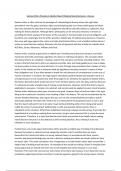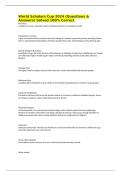Samenvatting
Summary A Level Film Studies Pulp Fiction (1994) Complete A* Notes
- Vak
- Instelling
This is a complete set of A* Pan's Labyrinth revision notes for WJEC Eduqas Film Studies A Level. The document is organised into following sections: - PULP FICTION GENERAL IN DETAIL NOTES - EXAM NOTES KEY PHRASES+MEMORABLE SCENES - PREVIOUS EXAM QUESTIONS topics included: - FILM FORM + NARRATI...
[Meer zien]












